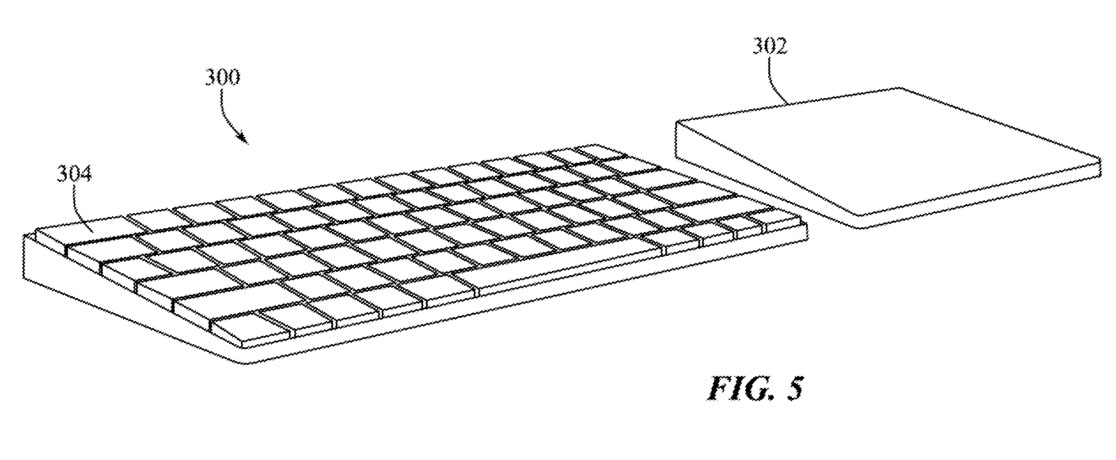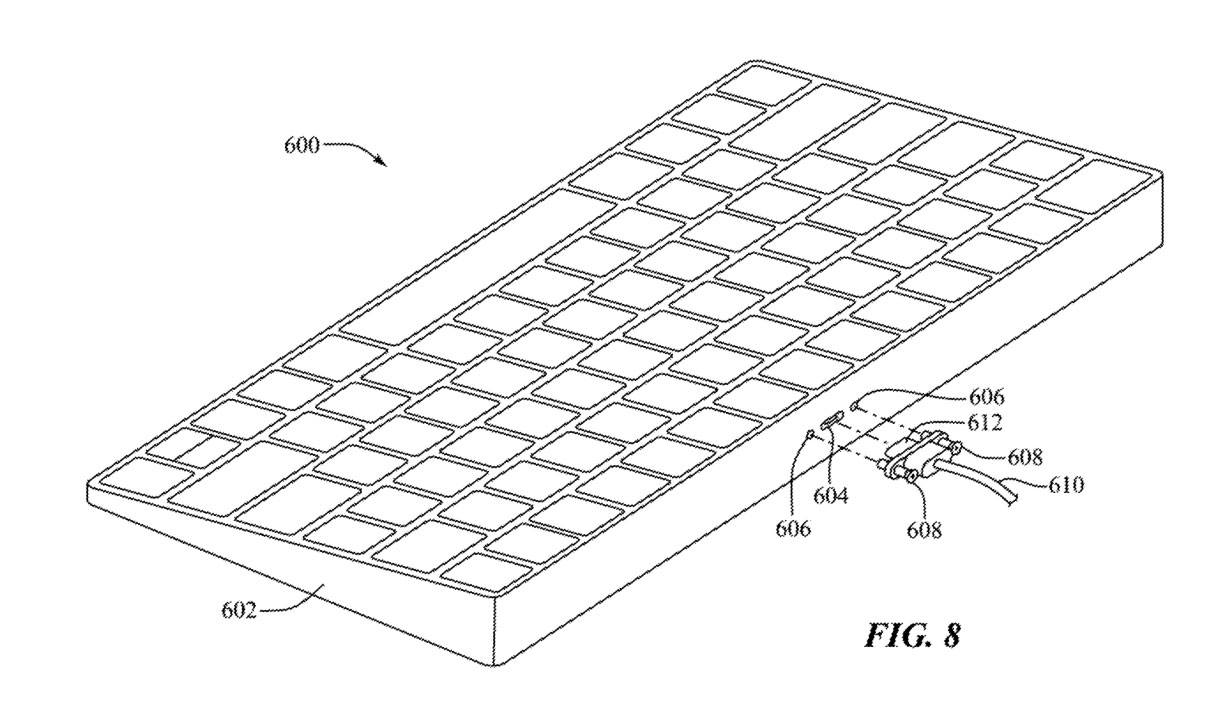Apple has invented and patented a 1980s home computer, or is it a Raspberry Pi 400 clone? The company submitted a patent to the US Patent & Trademark Office (USPTO) that envisions a powerful portable computer built into a keyboard that you can take while traveling and conveniently plug into a monitor or TV.
The patent drawings show a wedge-shaped Magic Keyboard style compact design, with a single cable for all the duties you might require: display, power, and data. Some images show an accompanying wedge resembling the Magic Trackpad; others show it next to a wireless mouse.

In its patent background section, Apple talks about how desktop computers with good performance levels have traditionally been bulky. Now Apple thinks it can create a powerful and highly portable solution, tapping into latent demand for such devices.
We have recently seen the revival of home computer wedge-shaped systems (i.e., the keyboard is the computer) with the launch of the Raspberry Pi 400. However, Apple is promising levels of computing power one would never expect from such a form factor. In addition, Apple has proliferated its very successful Apple Silicon M1 processors throughout its range of Macs and iDevices, and it naturally sees further opportunities for sales expansion.
The built-in CPU and GPU cores in the Apple M1, M1 Pro and M1 Max already deliver high performance at low power levels. So, Apple Silicon would be an obvious choice if you had to choose a computer architecture to build a cool running new computer in a keyboard form factor.
The patent is definitely angling at a more powerful M1 or M2 powered device, as it says that the keyboard could be fitted with an active fan, and the keyboard baseplate would be used to wick away heat. However, please note that some portable battery-powered M1 devices in existence are fanless (yet are still admirable performers).

Portable Mac Without a Built-in Pointing Device Is Pointless
In some pictures we see the Magic Keyboard Mac wedge with a Magic Trackpad style accompaniment, in others, there is a mouse. However, there is no getting away from the Mac needing a pointing device, as Apple has obstinately avoided making Macs that are touch screen friendly, for example.
With a device like this, which is being positioned as a portable – in contrast to the diminutive Mac Mini computers which are just small desktops – some way to build in or tie the pointing device to the keyboard seems like a must. Imagine taking this device somewhere and forgetting the mouse or trackpad.
Another weakness could be the Apple philosophy of reducing physical ports to an absolute minimum. Yes, it is neat to just have one port/cable for everything, but it might mean you need dongles for tech bits and pieces you want to connect, and who can have too many USB ports?
Many Patents Don’t Precipitate Shipping Products
Many patent applications showing products like the above never bear fruit. Though we have a great fondness for wedge-shaped computers from the 8-bit and 16-bit eras (and the new RasPi 400), there’s no guarantee that Apple will ever bring a device like this to market. We’ve seen plenty of interesting patent applications from Apple over the years, and only a handful have ended up in shipping products. So while this is an intriguing concept from Apple, don’t hold your breath on seeing it in the real world.




